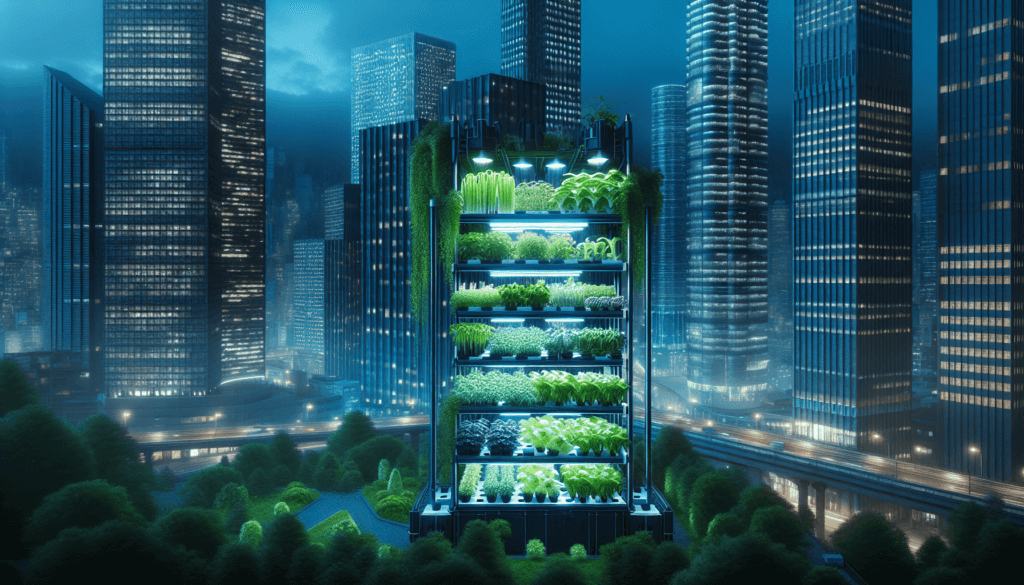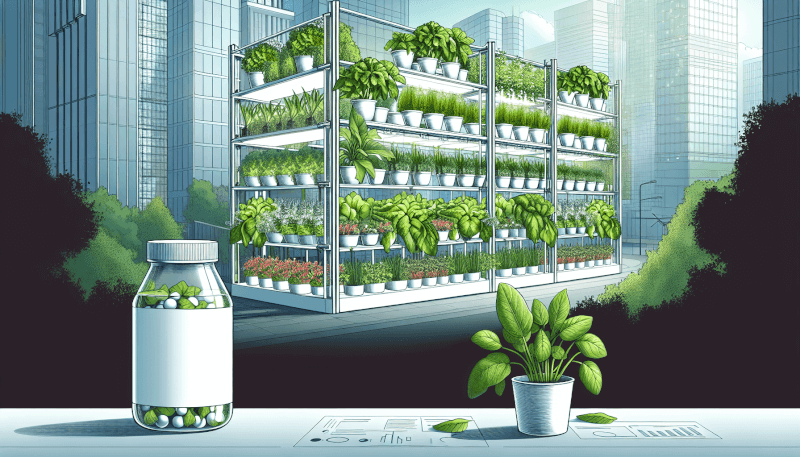Are you tired of living in the city and dreaming about having your own garden, filled with fresh vegetables and herbs? Well, look no further because we have the ultimate solution for you! The Ultimate Guide to Vertical Hydroponic Gardening in the City is here to show you how to transform your urban space into a thriving oasis of greenery. Whether you have a small balcony or a tiny rooftop, this guide will provide you with all the information you need to grow your own food using vertical hydroponic systems. Say goodbye to grocery store produce and hello to the satisfaction of harvesting your own homegrown goodies, all while living in the heart of the city.
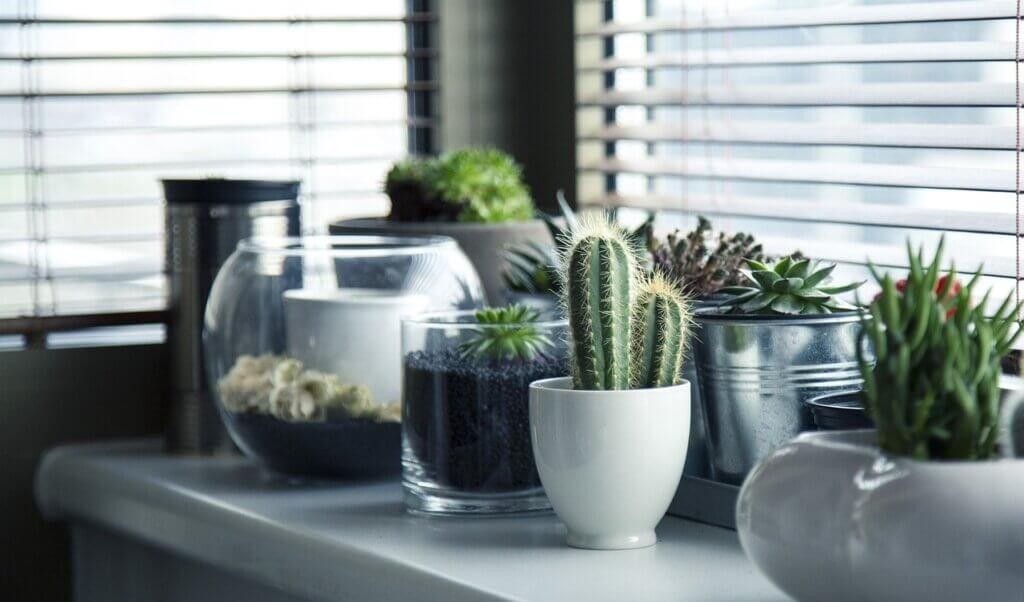
1. What is Vertical Hydroponic Gardening?
Vertical hydroponic gardening is a method of growing plants without soil, utilizing vertical space to maximize the number of plants that can be grown in a limited area. This innovative gardening technique is gaining popularity, especially in urban areas where space is limited.
1.1 Definition
Vertical hydroponic gardening involves suspending plants in a vertical structure, such as a tower or wall, and providing them with nutrients through a water-based system. Instead of relying on soil, plants receive all the necessary nutrients directly through their root systems, resulting in faster growth and higher yields.
1.2 Benefits
There are several benefits to practicing vertical hydroponic gardening. Firstly, this method allows you to grow a larger quantity of plants in a smaller area, making it an ideal choice for urban dwellers with limited space. Additionally, vertical hydroponic systems can be set up indoors, allowing you to garden year-round without being affected by seasonal changes or adverse weather conditions.
Furthermore, vertical hydroponic gardening eliminates the need for soil, reducing the risk of pests and diseases that can be commonly found in traditional soil-based gardens. This method also conserves water, as hydroponic systems recycle and reuse water, resulting in less water waste compared to traditional gardening methods.
1.3 How it Works
In vertical hydroponic gardening, plants are grown in a specialized growing medium or directly in water, depending on the chosen system. Nutrient-rich water is continuously circulated through the system, providing the plants with the necessary minerals for growth.
The vertical structure of the system allows for increased sunlight penetration, ensuring that all plants receive adequate light for photosynthesis. The water and nutrient solution are typically delivered to the plants through a drip or flood-and-drain system, providing them with a constant supply of nutrients while maintaining proper hydration.
2. Choosing the Right Location
When setting up a vertical hydroponic garden, choosing the right location is crucial for the success of your plants. Consider the following factors to ensure optimal growth and productivity.
2.1 Indoor vs. Outdoor
Vertical hydroponic gardens can be set up either indoors or outdoors, depending on your available space and environmental conditions. If you have limited outdoor space or live in an area with extreme weather, setting up an indoor garden might be the more suitable option. Indoor gardens also offer the advantage of year-round gardening and protection from pests and wildlife.
2.2 Sunlight Requirements
Sunlight is essential for the growth of plants, so it is important to assess the amount of sunlight your chosen location receives. Outdoor gardens should be positioned in a spot that receives at least six to eight hours of direct sunlight per day. If setting up an indoor garden, consider installing grow lights to provide the necessary light spectrum for photosynthesis.
2.3 Space Considerations
When choosing a location for your vertical hydroponic garden, consider the available space and the size of the system you plan to install. Ensure that there is enough space for the plants to grow vertically and for you to access the system for maintenance and harvesting. Additionally, take into account the weight capacity of the chosen location to support the weight of the system and the plants.
3. Selecting the Ideal Vertical Hydroponic System
Selecting the right vertical hydroponic system is crucial to the success of your garden. Consider the following factors when choosing a system that suits your needs.
3.1 Various System Types
There are several types of vertical hydroponic systems available, each with its own advantages and limitations. Some popular options include tower systems, wall-mounted systems, and stacked tray systems. Tower systems are ideal for small spaces, while wall-mounted systems are well-suited for vertical gardens in urban areas. Stacked tray systems provide versatility and scalability for larger gardens.
3.2 Factors to Consider
When selecting a vertical hydroponic system, consider factors such as cost, ease of installation, and maintenance requirements. Evaluate the system’s water and nutrient delivery method, as well as its compatibility with the chosen plants. Additionally, consider the system’s ability to provide adequate airflow and drainage to prevent excess moisture and root rot.
3.3 System Components
Vertical hydroponic systems typically consist of various components, including planting containers, grow lights (for indoor systems), a water reservoir, and a pump for nutrient circulation. Some systems may also require additional accessories such as timers, pH meters, and air pumps. Ensure that all necessary components are included with the chosen system or purchase them separately to set up a complete and functional garden.
4. Setting Up Your Vertical Hydroponic Garden
Now that you have chosen the right location and system, it’s time to set up your vertical hydroponic garden. Follow these steps to get started.
4.1 Preparing the Space
Before installing the system, prepare the chosen space by clearing any debris or obstacles that could hinder the installation. Ensure that the location is clean and free from pests. If setting up an indoor garden, protect the flooring by placing a waterproof barrier underneath the system to catch any water spills.
4.2 Installing the System
Follow the manufacturer’s instructions to install the vertical hydroponic system. Arrange the planting containers or growing media vertically, securing them to the structure or wall. Connect the water pump to the nutrient solution reservoir and ensure that the water flow and drainage are properly set up. If using grow lights, hang them at the appropriate height and position to provide optimal light intensity and coverage.
4.3 Nutrient Solution and pH Level
Prepare the nutrient solution according to the recommended ratios specified by the plant’s requirements. Pour the prepared solution into the water reservoir and adjust the pH level to the desired range, typically between 5.5 and 6.5 for most plants. Regularly monitor and adjust the pH level as needed to ensure proper nutrient absorption and plant health.
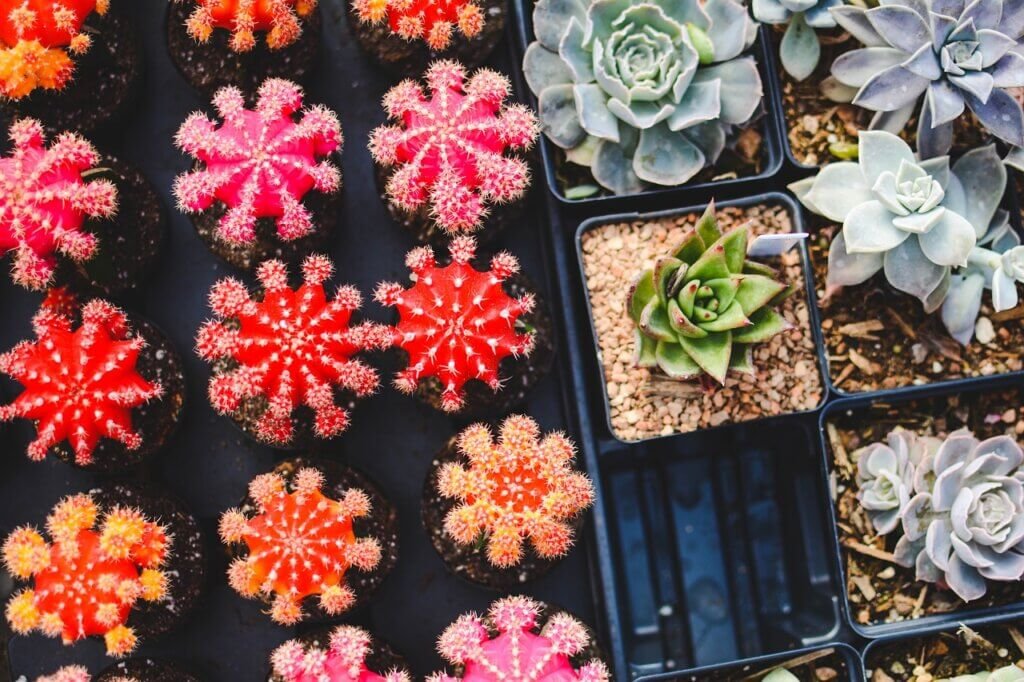
5. Choosing the Right Plants
The success of your vertical hydroponic garden relies on selecting the right plants that are well-suited for this method of gardening. Consider the following factors when choosing plants for your vertical garden.
5.1 Best Plants for Vertical Hydroponic Gardening
Numerous plants can thrive in vertical hydroponic gardens. Leafy greens such as lettuce, spinach, and kale are popular choices due to their fast growth and compact size. Herbs like basil, mint, and parsley also perform well in vertical systems. Additionally, strawberries, cherry tomatoes, and peppers can be successfully grown in vertical gardens.
5.2 Factors to Consider
When choosing plants, consider the space available and the growth habits of the selected plants. Opt for varieties that have a compact growth habit or can be trained to grow vertically. Furthermore, consider the light requirements, temperature preferences, and nutrient needs of the plants to ensure optimal growth and productivity.
5.3 Plant Propagation
Choose between starting from seeds or purchasing seedlings when it comes to plant propagation. Starting from seeds allows for a wider selection of plant varieties and is usually more cost-effective. However, it requires additional time and effort to germinate and grow the seedlings. Purchasing seedlings provides a head start, allowing you to skip the seed germination phase and focus on the growth and maintenance of the plants.
6. Maintaining Your Vertical Hydroponic Garden
Proper maintenance is essential to ensure the health and productivity of your vertical hydroponic garden. Follow these guidelines to keep your garden thriving.
6.1 Regular Monitoring
Regularly monitor your plants for signs of nutrient deficiencies, pest infestations, or diseases. Check the pH level and nutrient concentration of the solution to ensure that the plants are receiving the necessary nutrients. Keep an eye on plant growth and adjust the system as needed, ensuring adequate airflow and support for the growing plants.
6.2 Nutrient Management
Maintain a consistent nutrient schedule, following the recommended dosage for the chosen plants. Monitor and adjust the nutrient solution as needed to maintain the desired nutrient concentration. Avoid over or underfeeding the plants, as this can lead to nutrient imbalances and affect plant health. Regularly clean and disinfect the system to prevent the buildup of algae or bacteria.
6.3 Pest and Disease Control
Implement preventive measures to minimize the risk of pest infestations and diseases. Regularly inspect your plants for signs of pests such as aphids, whiteflies, or spider mites. Introduce natural predators such as ladybugs or use organic insecticides if necessary. Ensure proper ventilation and air circulation to prevent the development of fungal diseases. If disease or pest issues arise, promptly address them to prevent further damage to your plants.

7. Harvesting and Enjoying Your Vertical Hydroponic Produce
The joy of vertical hydroponic gardening lies in the bountiful harvests you can enjoy. Follow these guidelines to maximize your harvest and savor the fruits of your labor.
7.1 Harvesting Guidelines
Harvest your crops when they have reached the desired maturity. Leafy greens should be harvested by picking the outer leaves, allowing the inner leaves to continue growing. For fruits such as strawberries or tomatoes, wait until they are fully ripened before gently plucking them from the plants. Regular harvesting promotes continuous growth and ensures a fresh supply of produce.
7.2 Proper Storage
Once harvested, handle your produce with care to maintain its freshness and flavor. Rinse leafy greens under running water and pat them dry before storing them in airtight containers or bags. Store fruits and vegetables in a cool and dark place to extend their shelf life. Use harvested produce within a few days to enjoy the peak of flavor and nutrition.
7.3 Recipes and Culinary Ideas
Get creative in the kitchen and explore a variety of recipes and culinary ideas with your homegrown vertical hydroponic produce. Use fresh lettuce leaves to make vibrant salads or create refreshing smoothies with homegrown herbs and fruits. Experiment with different herb combinations to add flavor to your favorite dishes. With the abundance of fresh produce from your garden, the possibilities are endless.
8. Troubleshooting Common Issues
Even with careful maintenance, you may encounter common issues in your vertical hydroponic garden. Here’s how to troubleshoot and address these problems.
8.1 Nutrient Deficiencies
Nutrient deficiencies can manifest as yellowing leaves, stunted growth, or poor fruit development. Identify the specific nutrient lacking and adjust the nutrient solution accordingly. Increase the dosage of the deficient nutrient or choose a fertilizer formulated for hydroponic gardening that provides a balanced mix of essential nutrients.
8.2 pH Imbalances
Fluctuations in pH levels can affect nutrient absorption and lead to plant stress. Regularly monitor the pH levels of the nutrient solution and adjust as needed using pH up or pH down solutions. Keep the pH within the optimal range for the chosen plants to ensure proper nutrient uptake.
8.3 Pest Infestations
Pest infestations can be detrimental to your vertical hydroponic garden. Monitor your plants regularly for signs of pests and take immediate action if detected. Introduce natural predators such as ladybugs or apply organic insecticides if necessary. Maintain proper hygiene and cleanliness to minimize the risk of pest outbreaks.
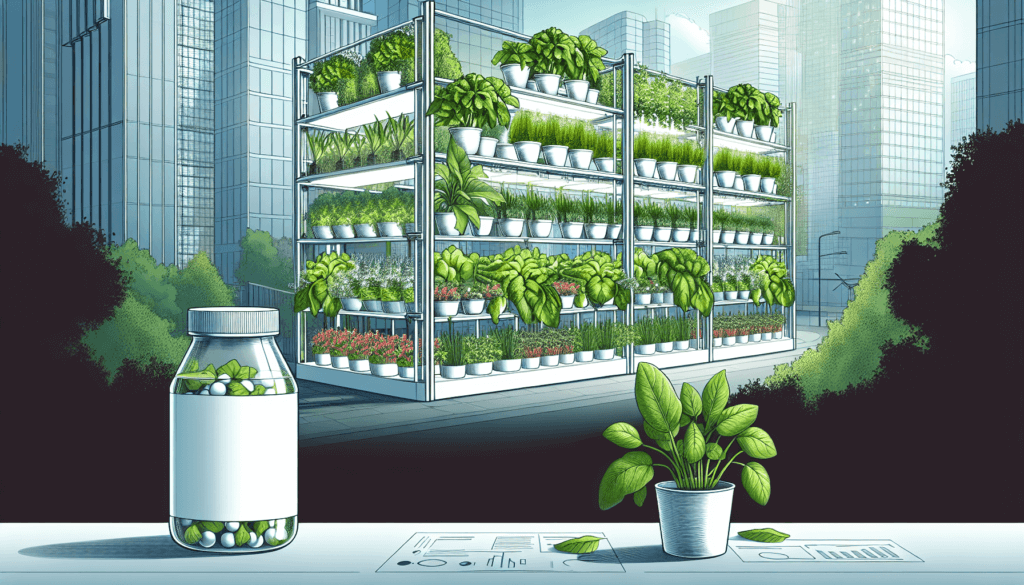
9. Vertical Hydroponic Gardening Innovations
Vertical hydroponic gardening continues to evolve with innovative technologies and practices. Explore the following advancements that enhance the efficiency and productivity of vertical gardens.
9.1 Vertical Gardens in Limited Spaces
Urban areas with limited space have witnessed the rise of vertical gardens integrated into the architecture of buildings. These vertical gardens utilize unused wall spaces or rooftops to grow plants, beautify the surroundings, and improve air quality. Advancements in vertical garden systems have made it possible to create lush green spaces even in the heart of the city.
9.2 Automated Systems
Automation has become increasingly prevalent in vertical hydroponic gardening. Automated systems employ sensors and timers to monitor and adjust lighting, temperature, humidity, and nutrient delivery. These systems reduce the need for manual intervention, making gardening more convenient and accessible to beginners.
9.3 Smart Hydroponic Technologies
The integration of smart technologies, such as IoT (Internet of Things) and AI (Artificial Intelligence), has revolutionized hydroponic gardening. Smart hydroponic systems can analyze and optimize growing conditions based on real-time data, improving plant health and productivity. These technologies also enable remote monitoring and control, allowing gardeners to manage their vertical gardens from anywhere.
10. Inspiring Examples and Success Stories
Vertical hydroponic gardening has inspired numerous individuals and communities to embark on their journey towards sustainable urban agriculture. Here are a few examples of successful projects and enterprises.
10.1 Urban Rooftop Gardens
Urban rooftop gardens have become a symbol of green innovation in cities worldwide. These gardens utilize the otherwise unused space on rooftops to grow a variety of crops, improving food security and reducing the urban heat island effect. Rooftop gardens not only provide fresh produce but also contribute to a greener and more sustainable urban environment.
10.2 Vertical Farming Enterprises
Vertical farming enterprises have emerged as a scalable and efficient solution to meet the increasing demand for fresh produce. These large-scale operations utilize vertical hydroponic systems to grow a wide range of crops in controlled environments. Vertical farming not only maximizes production in limited space but also minimizes the environmental impact associated with traditional agriculture.
10.3 Community Hydroponic Projects
Community hydroponic projects have fostered a sense of collaboration and empowerment among individuals and neighborhoods. These projects involve setting up vertical hydroponic gardens in community spaces such as schools, community centers, or vacant lots. By involving community members in the process, these projects promote food security, education, and the social and economic development of the community.
In conclusion, vertical hydroponic gardening is a versatile and efficient method of urban agriculture. By utilizing vertical space and providing plants with a nutrient-rich solution, gardeners can maximize productivity, conserve water, and enjoy fresh produce year-round. With proper planning, maintenance, and the right selection of plants and systems, anyone can create their own thriving vertical hydroponic garden, regardless of the space available. Happy gardening!
